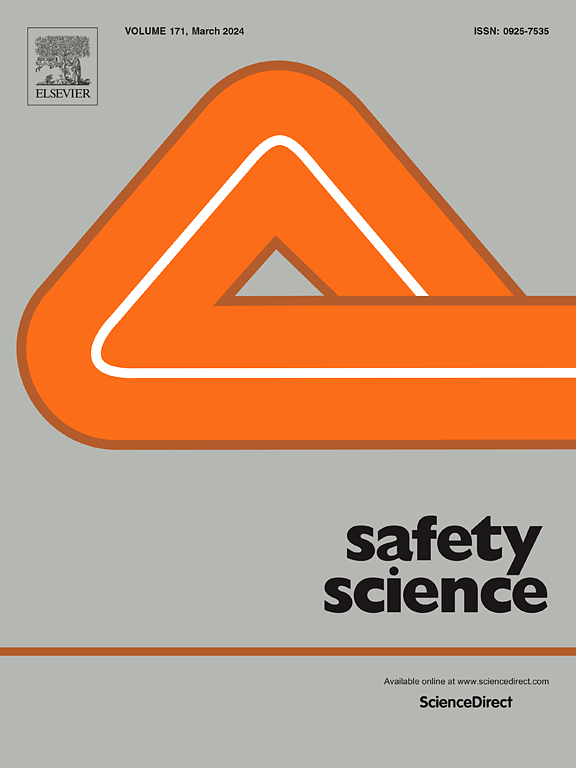How risk preference affects evacuees’ route choice in buildings: An IVR-based experimental study
IF 4.7
1区 工程技术
Q1 ENGINEERING, INDUSTRIAL
引用次数: 0
Abstract
During building evacuations, evacuees often tend to enter areas with smoke and flames, which contradicts established safety principles for evacuation. This paper investigates how individuals with different risk preferences process evacuation information and make route choices. 72 participants were categorized into two groups based on a risk preference questionnaire: one-third were identified as Risk Seeking Group (RSG) and the rest as Risk Averse Group (RAG). Subsequently, eye-tracking technology and immersive virtual reality (IVR) were employed to analyze the variations in behavior between these groups. The findings show that: (1) RAG exhibited a general attention bias toward risk-related information; (2) Significant differences were observed in route choice among RAG based on varying cognitive approaches; (3) While all participants acknowledged the importance of safety factors, approximately 40% behaviorally chose routes involving flames; (4) RSG prioritizes evacuation distance and evacuation efficiency in the evacuation process, achieving an average evacuation time that was 23.85% faster than that of RAG. Conversely, RAG displayed a tendency to avoid harm, even at the cost of evacuation efficiency. This paper deconstructs complex evacuation behaviors from a psychological perspective, providing a more comprehensive understanding of route choices among evacuees with different risk preferences. It serves as a reference for optimizing evacuation strategies and designing building safety features with consideration of psychological factors.
风险偏好如何影响建筑物中疏散人员的路线选择:一项基于ivr的实验研究
在建筑物疏散过程中,疏散人员往往会进入有烟雾和火焰的区域,这与既定的疏散安全原则相矛盾。本文研究了具有不同风险偏好的个体如何处理疏散信息并做出路径选择。根据风险偏好问卷,将72名参与者分为两组:三分之一被确定为风险寻求组(RSG),其余为风险厌恶组(RAG)。随后,使用眼动追踪技术和沉浸式虚拟现实(IVR)来分析这些群体之间的行为差异。结果表明:(1)RAG对风险相关信息表现出普遍的注意偏倚;(2)不同认知方式下,RAG在路径选择上存在显著差异;(3)虽然所有参与者都承认安全因素的重要性,但大约40%的人在行为上选择了涉及火焰的路线;(4) RSG在疏散过程中优先考虑疏散距离和疏散效率,平均疏散时间比RAG快23.85%。相反,RAG表现出避免伤害的倾向,甚至以牺牲疏散效率为代价。本文从心理学的角度对复杂的疏散行为进行解构,更全面地理解不同风险偏好下疏散人员的路径选择。为优化疏散策略和设计考虑心理因素的建筑安全特征提供参考。
本文章由计算机程序翻译,如有差异,请以英文原文为准。
求助全文
约1分钟内获得全文
求助全文
来源期刊

Safety Science
管理科学-工程:工业
CiteScore
13.00
自引率
9.80%
发文量
335
审稿时长
53 days
期刊介绍:
Safety Science is multidisciplinary. Its contributors and its audience range from social scientists to engineers. The journal covers the physics and engineering of safety; its social, policy and organizational aspects; the assessment, management and communication of risks; the effectiveness of control and management techniques for safety; standardization, legislation, inspection, insurance, costing aspects, human behavior and safety and the like. Papers addressing the interfaces between technology, people and organizations are especially welcome.
 求助内容:
求助内容: 应助结果提醒方式:
应助结果提醒方式:


